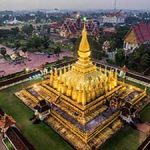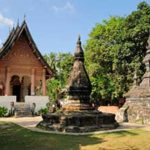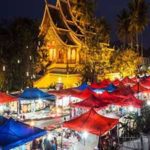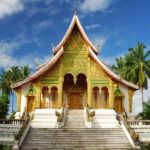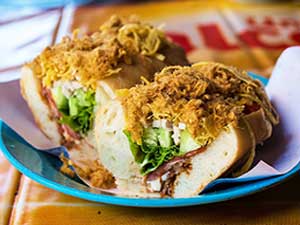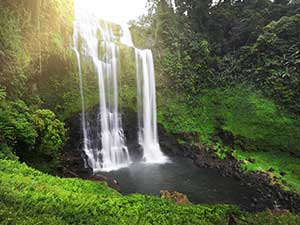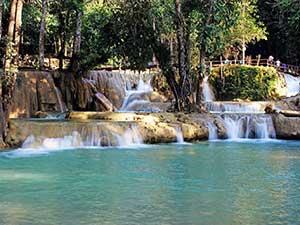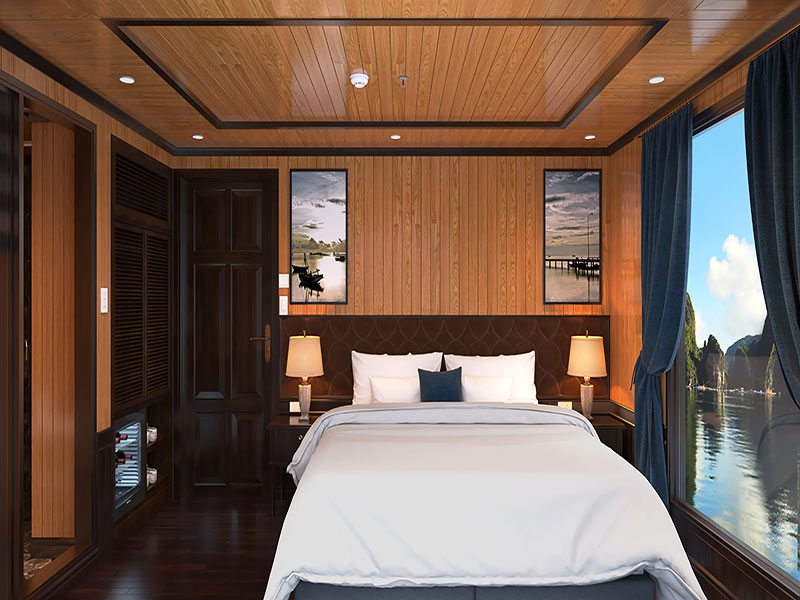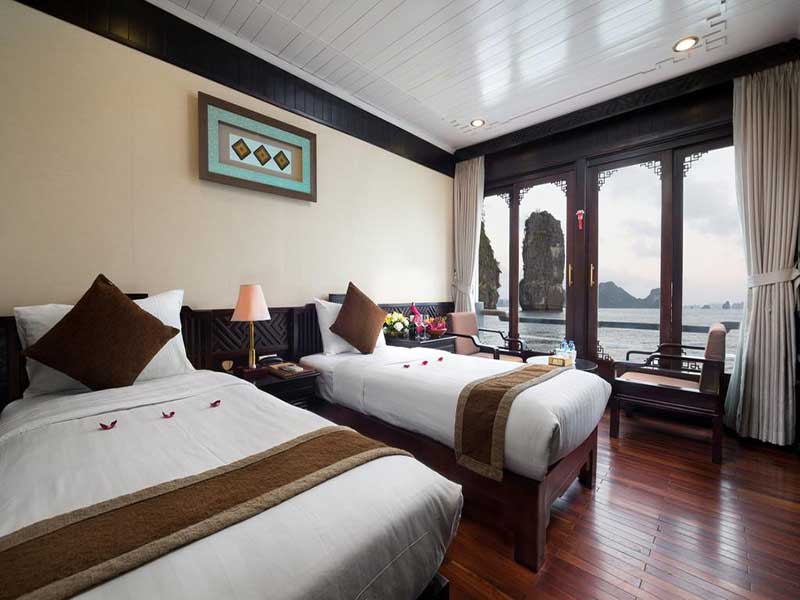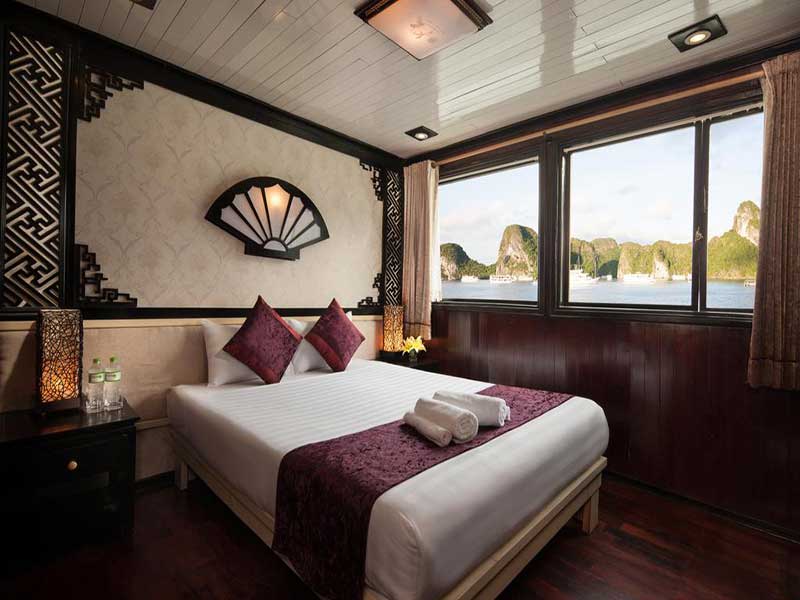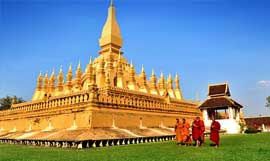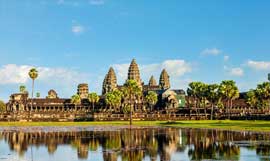Pak Ou Caves are located in the north of the ancient capital Luang Prabang on the Mekong River and you can get to Pak Ou Caves by boat or by road transport. Pak Ou is famous for its small Buddha statues, including hundreds of wooden Buddha statues (damaged) on the walls. The system of Buddha statues in Pak Ou is very diverse, showing many different forms of Buddhism.

(Source: the internet)
According to the history of Buddhism passed down from ancient times, if people want to practice the realm of the desired world, they first need to remove and set aside the anger, the ignorance, self-respect and contempt for others. The best way to eradicate them is to be nothing more than accepting to being a beggar. There is another interesting place, which is Pak Ou.
Pak Ou is located about 30 km from the ancient capital of Luang Prabang, right by the mouth of the Nam U River, one of the important tributaries of the Mekong River. And that is also the reason of its name – Pak Ou, the mouth of the Ou River.
Formed by a series of tectonic processes and volcanoes, the Pak Ou overlooks the majestic amphitheater with its imposing limestone cliffs, exotic shapes, and perhaps this has caused the Pak Ou’s surroundings become more mysterious.
Due to being located on a small mountain and facing the river, to reach the Pak Ou cave, the only way is to use the boat of the indigenous people.
Pak Ou is the name of two common Buddhist shrines: Tam Ting (lower cave) and Tam Phum (upper cave). The point that impresses those who first came to this Pak Ou caves is a huge Buddha statue system with many different styles. Pak Ou caves contain more than 4000 ancient Buddha statues from over 300 years ago in size and shape by the Lao people at night sneaking away to hide the Buddha statue when the capital Luang Prabang was invaded.

(Source: the internet)
There are two hypotheses about what causes the Pak Ou to become the largest Buddha image preserve.
The first theory is that the complex terrain and difficult access roads make Pak Ou become the center of Buddhist statues. It is said that hundreds of years ago, during a fight with the enemy, Luang Prabang was defeated; to avoid the destruction of the enemy, the monks brought many Buddha statues and asylum. Upon arriving at this river, suddenly the storms happened, the monks’ boat capsized and drifted to the hill. Assuming that this is the Buddha’s mind, the monks bring all the Buddha statues to hide here. As time passes, the number of Buddha statues increases.
The second theory is that the Pak Ou caves were the sacred sites before Buddhism in Laos. This theory comes from the belief in animism, or polytheism, which was very popular in ancient times, and the Lao people were no exception. It is believed that the Pak Ou cave is located at the confluence of three rivers and here it was once used as an area for worshiping the river.
When Buddhism was brought into the world, the theory of spiritual beings in the past continued to develop, and then the association with this religion to form the mysterious Buddha as today. Despite these assumptions about origin, the thousand-year-old Pak Ou caves remain a sacred place in the minds of the Lao people regardless of their caste or class.
Today, for the convenience of pilgrims and visitors to visit, people have built a stone system of over 200 steps from Tam Ting cave to Tam Phum cave. Like Tam Ting cave, Tam Phum cave also contains many large and small Buddha statues donated by people for hundreds of years. However, due to the terrain structure, the Tam Phum cave is much longer than the Tam Ting cave. This structure makes the Tam Phum colder. Resonated by the dim light and a sacred Buddhist space, the Tam Phum movement makes anyone feel the mystery of entering the cave.
Not only creating a Buddhist space, Pak Ou caves also create an extremely gentle living space with the image of hardworking women with looms.
In the past, when the Pak Ou caves were not well known, people wove cloth mainly to serve the family and the community. However, since the Pak Ou cave became one of the major tourist destinations in Luang Prabang, this traditional textile product has become a souvenir for visitors.
– Opening hours: daily, from 08:00 am to 05:00 pm.
– The price of admission: 20.000 kip (€2).
Explore more article: Luang Prabang Elephant Camp; Huean Chan House; Tad Sae Waterfall; Wat Aham; Wat Mai Suwannaphumaham temple; Luang Prabang night market; Ban Xang Khong weaving village; Wat Visoun; Wat Long Khoun; Wat Xieng Thong; Royal Palace Museum Luang Prabang; Mount Phousi; Kuang Si waterfall; Alms giving ceremony

